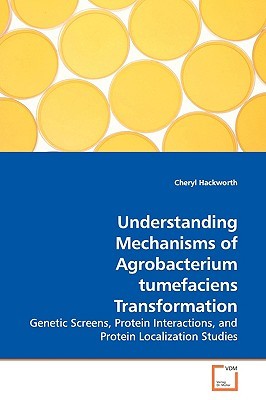
- We will send in 10–14 business days.
- Author: Cheryl Hackworth
- Publisher: VDM Verlag
- ISBN-10: 3639137450
- ISBN-13: 9783639137453
- Format: 15.2 x 22.9 x 0.9 cm, softcover
- Language: English
- SAVE -10% with code: EXTRA
Understanding Mechanisms of Agrobacterium tumefaciens Transformation (e-book) (used book) | bookbook.eu
Reviews
Description
Agrobacterium tumefaciens causes crown gall disease on plants and is the primary vector in genetic engineering of plants. Agrobacterium transports DNA and proteins to the plant cell via a Type IV Secretion System. This system is similar to secretion systems in human pathogens and those used for DNA exchange during bacterial conjugation. To better understand this process, a genetic screen using yeast as the genetically engineered host was developed to identify host proteins involved in transformation. While developing this screen, factors that alter transformation of yeast were identified. The yeast two-hybrid (Y2H) assay was used to identify protein interactions between the exported proteins and the secretion system. Additional studies indicate the secreted proteins are targeted to the secretion system via a conserved transport sequence. The Y2H system was also used to assay for interactions between proteins of the secretion system. Together, these studies provide insights into transporter complex protein subassemblies, the process of protein export during Agrobacterium transformation, and contribute to understanding homologous systems in human pathogens and bacterial conjugation.
EXTRA 10 % discount with code: EXTRA
The promotion ends in 16d.19:35:48
The discount code is valid when purchasing from 10 €. Discounts do not stack.
- Author: Cheryl Hackworth
- Publisher: VDM Verlag
- ISBN-10: 3639137450
- ISBN-13: 9783639137453
- Format: 15.2 x 22.9 x 0.9 cm, softcover
- Language: English English
Agrobacterium tumefaciens causes crown gall disease on plants and is the primary vector in genetic engineering of plants. Agrobacterium transports DNA and proteins to the plant cell via a Type IV Secretion System. This system is similar to secretion systems in human pathogens and those used for DNA exchange during bacterial conjugation. To better understand this process, a genetic screen using yeast as the genetically engineered host was developed to identify host proteins involved in transformation. While developing this screen, factors that alter transformation of yeast were identified. The yeast two-hybrid (Y2H) assay was used to identify protein interactions between the exported proteins and the secretion system. Additional studies indicate the secreted proteins are targeted to the secretion system via a conserved transport sequence. The Y2H system was also used to assay for interactions between proteins of the secretion system. Together, these studies provide insights into transporter complex protein subassemblies, the process of protein export during Agrobacterium transformation, and contribute to understanding homologous systems in human pathogens and bacterial conjugation.


Reviews